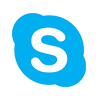China looks to improve output of green electricity

A wind power plant in Jiangxi province. (Photo/Xinhua)
China is the only country in the world with electricity accessible to all residents. While the growth of electricity generated across the world was just 3.7 percent by the end of 2018, that of China reached 8.4 percent in the same period to surpass 7 trillion kilowatt-hours (kWh).
Last year, 70.4 percent of electricity used by China was generated by thermal energy, as the country made progress in dust removal, denitrification and desulfurization technologies in processing thermal energy.
To reduce the use of thermal power for environmental protection, in recent years, the country has been looking to produce clean electricity from renewable energy resources, such as water, wind and solar power.
China's waterpower resources and potential installed hydropower capacity are both the largest in the world. Last year, about 1.23 trillion kWh of electricity was generated by waterpower, which is equivalent to that produced by 400 million tons of coal.
However, China suffers from uneven distribution of waterpower resources. Southwest China, which is home to numerous rivers and lakes, holds more than 60 percent of the exploitable water resources. Eight of China’s 13 largest hydropower stations are based in this region.
To send green power to fit the demands of regions in other parts of the country, such as eastern China, the country began to build power transmission lines.
A 500-kv power transmission line that links the Gezhouba hydropower project with Shanghai, Jiangsu and Guangdong provinces was established in 1990, to ensure the attainment of the eastern region’s huge demand for power.
Last year, the Three Gorges project generated 100 billion kWh of electricity, 40 percent of all power produced in Hubei province, where the project is based.
However, as China has tightened approval on hydropower station construction and requires stricter assessment, more alternatives of clean energy are needed.
It is not easy to tap into wind and solar power potential because such energy is easily affected by the weather and the distribution is uneven.
In China, most of the wind potential is located in northern areas such as Xinjiang, Inner Mongolia, and Gansu province, far away from the heavily populated and energy-hungry eastern regions.
In 2017, wind power generated 55.1 billion kWh of electricity for Inner Mongolia, nearly 20 percent of the country’s total energy produced by wind power.
The sunshine duration in the west of the Qinghai-Tibet plateau, southern Xinjiang, Gansu and Ningxia can exceed 3,000 hours within a year, compared with just 1,000 hours in Sichuan and Guizhou provinces.
However, much of the power generated in these places has gone to waste because they need much less power than produced. In 2017, Gansu and Xinjiang wasted 33 percent and 29 percent of wind power generating capacity respectively.
To deliver the overabundant green power to eastern regions, in 2014 the country built an 800-kv power transmission line running from Xinjiang's Hami region to Zhengzhou in central China's Henan province. In 2017, another 800-kv power transmission line between Jiuquan in Gansu and Xiangtan in central China's Hunan province was also built.


 +86-13460933678
+86-13460933678